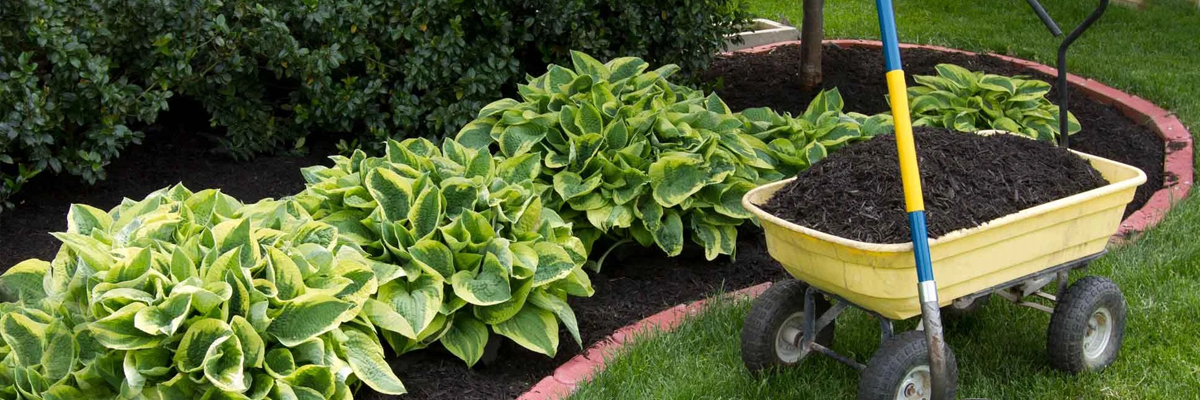
Mulching Guide
Mulch is beneficial for a number of reasons. It slows weed growth, improves moisture retention in your soil and gives any garden area a fresh, finished look. Estabrook's offers a number of different mulches to choose from, including both bagged and bulk types. Some have specific applications while others, like shredded bark, are not only chosen for their usefulness but for a certain color preference.
Application
Applying mulch is easy. Simply follow these steps:
- Edge around the plants and beds, removing any grass that has crept in from the previous year(s) while maintaining a 3-4" V-shaped drop from where the grass ends and the drip line of the plant begins. This will allow more mulch depth near the side of the drip line where runner grasses enter and preven more from encroaching. We also carry garden edging if you prefer.
- Avoid mixing soil into the mulch as you apply it. Dormant weed seeds can sprout in the mulch and work against you.
- Water the mulch down well after application. This will ease any root disturbance you may have caused to the plants.
- If you plan on applying mulch every year, consider applying just a thin dress up layer. Repeated thick layers will hamper plant growth (see below under trees and shrubs). In any case, old mulch should be scraped off every 3-5 years and then added to the compost or carted away. Then apply a fresh layer.
Tree & Shrubs
We recommend a shredded bark for trees and shrubs. It knits together well and provides the best weed control and moisture retention. Just remember to pull back the mulch immediately from around the trunk of trees and the crown of shrubs to aid in the reduction of disease and insect damage. At all costs avoid the "mulch volcano" technique, which is sometimes seen. This is where the mulch is applied too thickly year after year until it is banked up against the plant like the cone of a volcano. This greatly reduces the flow of oxygen to the roots of newly planted trees, contributes to insect and disease damage to the bark, and is generally an eyesore.
Perennials
Although most people use bark mulch in perennial areas, it's not the ideal mulch since it can become compacted and prevent the natural crown development of the plants. Consider using compost instead. Plant crowns will develop normally and the compost can be worked in each year, improving your soil's structure and nutrient levels, which most perennials will appreciate.
Mixed Tree, Shrub, Perennial Borders
This is where the choice becomes difficult since it's usually only practical to use one type of mulch. Either type of mulch can be used depending on your tendency for micro-management. A suggestion would be to plant these areas heavily with plants and groundcovers and then allow them to grow in together and eliminate the need for frequent mulching.
When to Apply
Mulching can be done in either the fall or spring (whenever your garden is in a dormant state), however we recommend a fall application. The garden will be ready to go in the spring when most people have less time on their hands, the damage to plants will be minimized since there is no tender growth emerging and you can take advantage of more comfortable fall working temperatures.